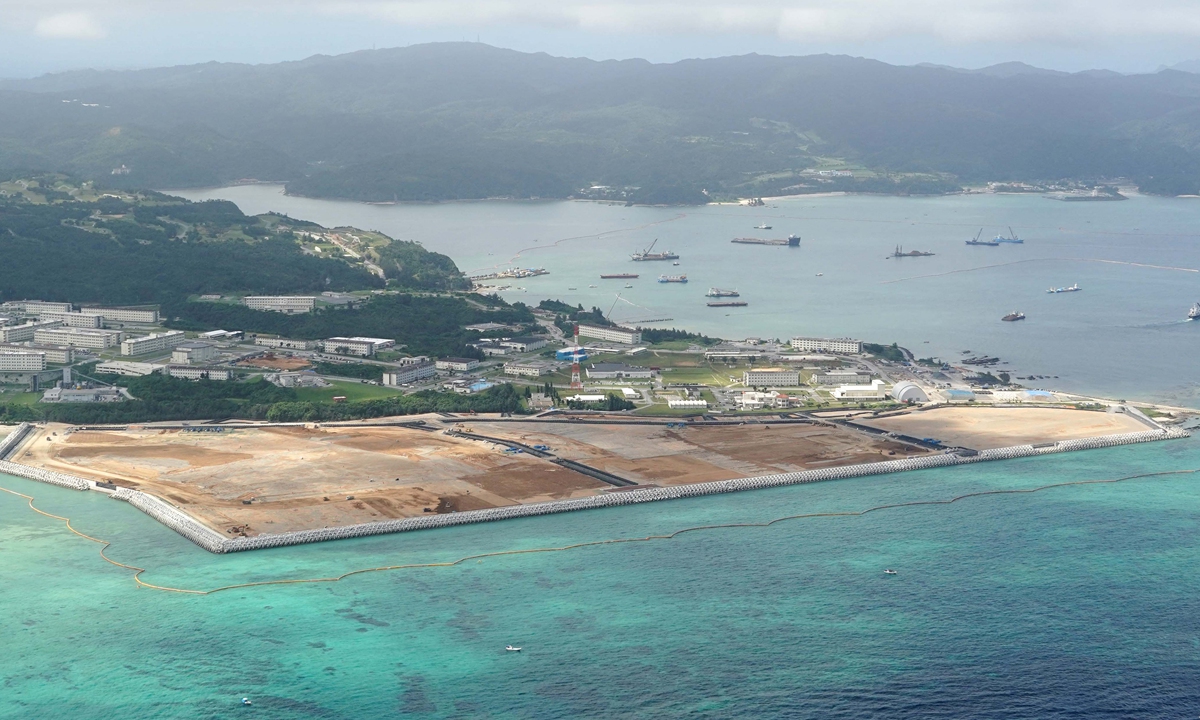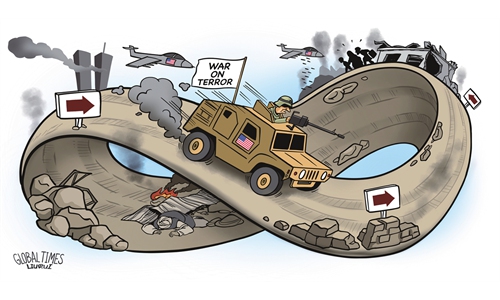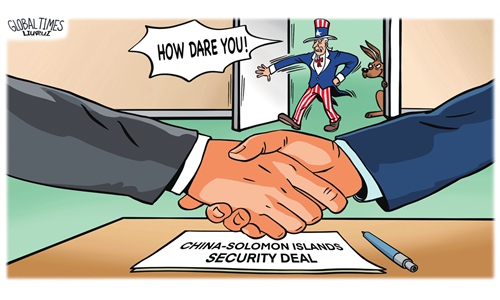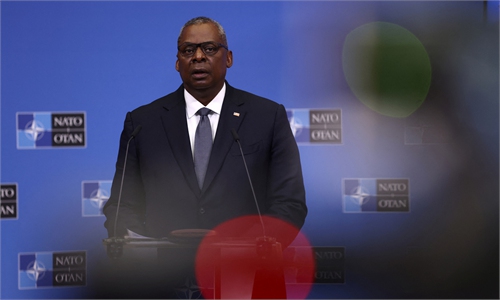Allies’ reluctance to host GBIRM shows US’ increasing difficulty to maintain military presence in Asia-Pacific

Landfill site for US air base in Okinawa. Photo: AFP
The RAND Corporation, a US-based think tank, released a study on May 2, analyzing the possibility of the five US treaty allies in the Indo-Pacific region - Australia, Japan, the Philippines, South Korea, and Thailand - hosting US ground-based intermediate-range missiles (GBIRMs) which have ranges between 500 and 5,500 km.
The US currently has active military bases in Australia, Japan, the Philippines, and South Korea. Among Washington's allies, Japan has the largest US military bases in the world while South Korea also hosts many. Thus, with such a strong US presence, the deployment of ground-based intermediate-range missiles (GBIRMs) in these countries, as mentioned in RAND's report, is bound to pose a considerable threat to China.
The report concludes that finding an ally willing to host GBIRMs is more challenging than finding allies willing to host US military forces in other ways, such as air bases. This is because compared to other types of arms, GBIRMs are completely offensive weapons. For the US' regional allies, their deployment should be carried out with greater caution as it would easily raise opposition voices at home. Moreover, it would also be adamantly opposed by other countries in the region.
The report also argues that these five US regional allies would be less receptive to hosting a system like GBIRMs as long as current domestic political conditions and regional security trends remain the same.
However, in my opinion, the willingness to accept US GBIRMs varies among the five nations. For example, Canberra, as a loyal supporter of Washington, has the highest likelihood of hosting GBIRMs, while Seoul, Bangkok, and Manila are most unlikely.
Tokyo, on the other hand, is in a very conflicted position. The deployment of medium-range ballistic missiles (MRBMs) in the country, particularly, in the Ryukyu Islands, can pose the greatest threat to China and Russia and that is what the US would like to achieve. But this will certainly also draw opposition from Japanese society, especially the residents of the Ryukyu Islands.
The US is treating all of its Indo-Pacific allies as its unsinkable aircraft carriers in the region, turning them into forward battlefields. Since all these countries have signed alliance treaties with the US, Washington can use the pact to hijack these countries and force them to provide support by allowing a military base.
The US relies heavily on its allies to maintain its military presence in the region but such a path is becoming increasingly difficult for Washington.
First, the US is now facing two powerful opponents, China and Russia, and it has neither the confidence nor the ability to fight alone. Washington's confrontation against Beijing and Moscow can only be achieved by roping in other countries to fight as one gang.
Most importantly, the so-called threat from China and Russia is only imaginary by the US because the strength of China and Russia is what makes it lose its global hegemony, an unacceptable scenario for the US.
But for other countries, China and Russia can bring opportunities and lead to a win-win outcome. The US wants to pull in nations around the world to confront China and Russia. But these countries will surely prioritize their national interests. It is impossible for them to put the interests of the US above their own.
Washington's allies are gradually starting to see clearly that deploying US weapons is only a way to maintain America's hegemony. The US will always adhere to "America first" and be ready to abandon its allies when needed. Therefore, none of these countries want to become cannon fodder for Washington's interests.
The author is a Chinese military expert and TV commentator. opinion@globaltimes.com.cn



